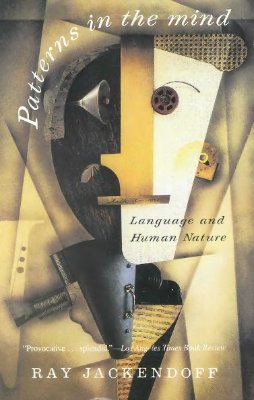Publisher: Basic Books.
Publication date: 1995.
Number of pages: 256.
Format / Quality: DJVU.
From Library Joual.
In the late 1950s, Noam Chomsky revolutionized linguistics by proposing that the infant's ability to lea language cannot be explained by simple leaing principles but is dependent upon the existence of complex, innate mental structures. Jackendoff explains the current state of Chomskyan theory by organizing his book around the question "What do we need in order to be able to talk? " In order to find an answer, he reviews fascinating material from developmental psychology, neurology, and the cognitive sciences as well as linguistics. He goes beyond the standard linguistics arguments to posit the existence of parallel mental structures goveing other processes such as music and vision. The author is that rare creature, an academic who can convey his fascination with his field to the general reader. Highly recommended for all academic libraries, as well as for public libraries serving an educated populace.
- Mary Ann Hughes, Neill P.L. , Pullman, Wa.
From Booklist.
Jackendorf updates the ground-breaking investigation into human language introduced by Noam Chomsky as "generative linguistics, " in a conversational, accessible style. After reviewing current language theories, he links language to broader human capabilities, his ideas founded on the hypothesis that there exists a genetically determined specialization for language that embeds grammatical principles within the human brain. Human experience, in this view, is constructed out of such principles, which operate in music, vision, and, most speculatively, in social organization. Jackendorf also introduces the reader to research suggesting that there are structural similarities between signed and spoken language, that creole languages are created by children, and that there is a link among adult language impairments, language development in children, and the age factor in both. Helpful restatements at chapter ends and a reading list organized by topic encourage mastery of areas only touched upon in Jackendorf's discussion. Virginia Dwyer.
Publication date: 1995.
Number of pages: 256.
Format / Quality: DJVU.
From Library Joual.
In the late 1950s, Noam Chomsky revolutionized linguistics by proposing that the infant's ability to lea language cannot be explained by simple leaing principles but is dependent upon the existence of complex, innate mental structures. Jackendoff explains the current state of Chomskyan theory by organizing his book around the question "What do we need in order to be able to talk? " In order to find an answer, he reviews fascinating material from developmental psychology, neurology, and the cognitive sciences as well as linguistics. He goes beyond the standard linguistics arguments to posit the existence of parallel mental structures goveing other processes such as music and vision. The author is that rare creature, an academic who can convey his fascination with his field to the general reader. Highly recommended for all academic libraries, as well as for public libraries serving an educated populace.
- Mary Ann Hughes, Neill P.L. , Pullman, Wa.
From Booklist.
Jackendorf updates the ground-breaking investigation into human language introduced by Noam Chomsky as "generative linguistics, " in a conversational, accessible style. After reviewing current language theories, he links language to broader human capabilities, his ideas founded on the hypothesis that there exists a genetically determined specialization for language that embeds grammatical principles within the human brain. Human experience, in this view, is constructed out of such principles, which operate in music, vision, and, most speculatively, in social organization. Jackendorf also introduces the reader to research suggesting that there are structural similarities between signed and spoken language, that creole languages are created by children, and that there is a link among adult language impairments, language development in children, and the age factor in both. Helpful restatements at chapter ends and a reading list organized by topic encourage mastery of areas only touched upon in Jackendorf's discussion. Virginia Dwyer.

